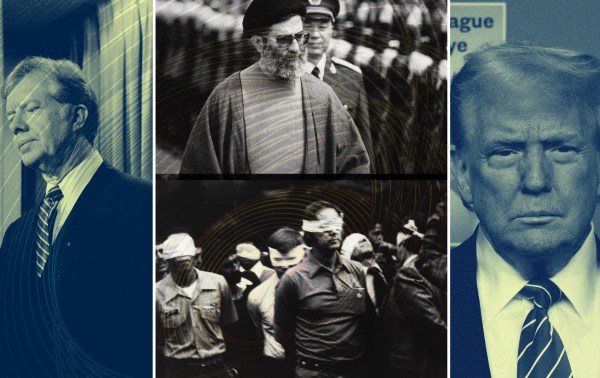I’ve always been a fan of the Winter Olympics. Maybe it was Kristi Yamaguchi’s amazing ponytail in 1992 or the Mariah Carey “Hero” montage of Dan Jansen in 1994. By 2002, as I sat in my dorm room watching the short track competition, I very much entertained the possibility of marrying Apolo Ohno … if only I could figure out a way to meet him.
I say all this to make clear that I know nothing about the mechanics of curling beyond what I’ve seen since it returned to the Olympics in 1998. And like a good American, I didn’t give it much thought until our men’s team won the gold in 2018.
But then it hit me like a blast from the hammer: Curling is the perfect analogy for political campaigns.
The underlying dynamics of an election cycle (the economy, the popularity of the president, national events driving the news cycle) are like the 44-pound “stone” hurtling toward the (please hold while I google what the, you know, bullseye thing is called) … “house.” Once the stone is moving, this thing is heavy and it’s got momentum that is out of the “skip’s” control.
The campaign staff are like the guys with the brooms that are frantically sweeping the ice as this 44-pound rock slides along the ice. It’s a lot of activity no doubt but one questions how much is being accomplished. Maybe all that sweeping allows the stone to move another inch or two along the ice. Or maybe it makes the rock head down the ice just a little bit straighter than it might otherwise.
But this much is also true: Even if the effect is minimal, then your team will drill and drill and drill until the sweepers can get the stones into the best position possible.
In politics, a lot of elections are won by 6 points and there’s nothing the losing (or winning) team’s sweepers could have done to change the outcome. But some races come down to just a couple points and you rarely know which ones are going to be which. That means every race tries to hire the best sweepers and every sweeper sweeps for her life.
To give some indication of how often elections are close—and whether campaign tactics may have been decisive—we can look at how often the outcome triggers a recount, which is automatic in about half of states if the margin is less than 1 percent. One study found that just half a percent of statewide elections—27 campaigns—between 2000 and 2015 were close enough to warrant a recount. And another study found that in the 2018 congressional midterms, “the margin of victory separating Democratic and Republican candidates for the House of Representatives was under 1 percent in nine districts and under 2 percent in ten more..” Again, that means that just under .5 percent of campaigns are “close.”
So what are the sweepers doing and how well does it work?
Campaigns in the United States spend more than $6 billion in a cycle. In 2012, that came out to roughly $30 per voter for just the presidential campaigns. Campaigns spend money on lawyers and speechwriters and travel, but the bulk of those billions goes to television advertising, digital advertising and targeting, and get-out-the-vote [GOTV] efforts like door-to-door canvassing and volunteer coordination across a dozen or more states.
As for what works, at least on the academic side it’s becoming increasingly clear that no amount of furious sweeping does much to get voters to change their minds. The Atlantic summarized these findings:
The findings suggest that a lot of the time, energy, and money poured into traditional campaigning methods is wasted, and that the campaign operatives hawking tried-and-true tactics don’t have the evidence to back up their claims. It also casts doubt on the theory of the swing voter who can be persuaded with enough flyers, ad exposure, and conversations with earnest volunteers. In reality, Broockman and Kalla find, direct outreach is most effective at improving voter turnout, suggesting that campaigns should focus on getting their core supporters to the polls than reaching out to a mythical middle.
But not all sweeping is fruitless.
“[D]oor-to-door canvassing was the most consistently effective and efficient method of voter mobilization … and personalized messages delivered in a conversational manner over the phone may be as effective (and cost-effective) as canvassing,” according to a review of recent studies published by Yale’s Institution for Social and Policy Studies. They also found some bad news for the communications strategists: “the manner in which the messages are delivered (whether they are personal and conversational) is more important than the content of the messages themselves.”
And what kind of return can a campaign expect for its troubles? “[D]oor-to-door canvassing increases turnout by 1.0 percentage point, direct mail increases turnout by 0.7 percentage points, and phone calls increase turnout by 0.4 percentage points” in a study of more than 200 GOTV experiments. And what about campaign’s biggest expenditure—television advertising? At least one recent study found that it can have an effect—of maybe around .8 percent.
So next time you see a pundit talking about a campaign’s innovative strategy to reach swing voters, listen for the sound of a broom on the ice and imagine 44 pounds of granite gliding past. Oh, and make sure to cheer on the USA’s curling team in two years. They’ve earned it!
Photo by Wu Gang/Xinhua/Getty Images.








Please note that we at The Dispatch hold ourselves, our work, and our commenters to a higher standard than other places on the internet. We welcome comments that foster genuine debate or discussion—including comments critical of us or our work—but responses that include ad hominem attacks on fellow Dispatch members or are intended to stoke fear and anger may be moderated.
With your membership, you only have the ability to comment on The Morning Dispatch articles. Consider upgrading to join the conversation everywhere.